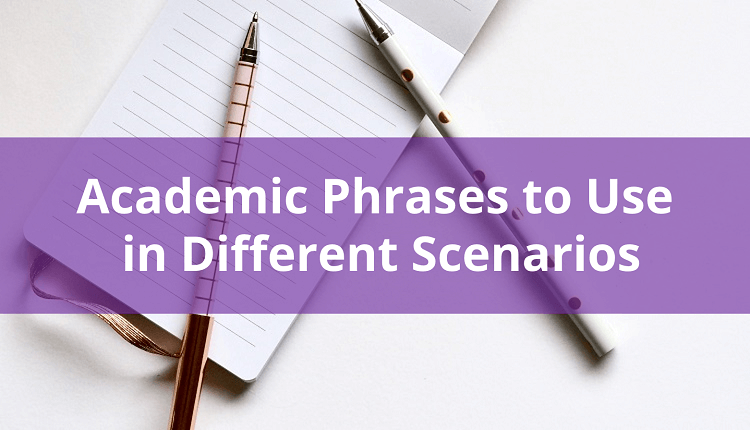In academic documents, authors need to explain or report a wide range of research activities. For instance, they need to describe the purpose of their research, refer to other research papers, specify the procedures used, and compare the outcomes of their study.
The phrases used to report such information varies from spoken English. For instance, for explaining the aim of a study, when addressing another person face-to-face, one could say, “I want to tell you about….” But, in an academic context, one should write, “This study aims to explain….” Note how this academic version avoids direct reference to either the writer (I, we) or the reader (you) and favors the choice of vocabulary specific to that field of study—“aims” rather than “want to” and “explain” rather than “tell.” It is also beneficial for authors to use a writing assistant such as Trinka. It is an AI-powered tool and is trained with the best academic papers in diverse subject areas to give the most relevant phrasing suggestion that makes academic writing more effective.
In this article, we will discuss various types of phrases to introduce or report information in academic writing.
Phrases to Define the Scope of a Study
Scope refers to either the objectives or subject matter which is (not) covered in a text.
- This paper presents a new method for localizing the electric activity in the brain based on multichannel surface EEG recordings.
- This thesis intends to demystify the facilitation of participatory processes to enhance the performance of the facilitation professional.
- This thesis focuses on the issue of text retrieval allowing mistakes, also called “approximate” string matching.
- This study does not consider whether parents and friends actually smoke at the levels reported by subjects.
- The case of supersaturation, with fog formation, lies beyond the scope of this study.
Phrases to Describe What is About to Follow
Such phrases frequently occur at transitions between sections of the text.
- In this section, we compare the prices of bond options implied by each of the different interest rate processes.
- This section reviews certain concepts of multi-index asymptotics that were introduced in Phillips and Moon (1999).
- Furthermore, this section discusses both clinical and laboratory methods of eye movement examination.
- We now return to the question of estimating the extent of the fluctuations in I.
Besides the statements given at the start of individual sections, theses, journal articles, and reports often include a paragraph that previews the whole structure of the document. This convention is standard for research articles in fields such as engineering, physics, and biochemistry. For instance:
The remainder of the paper is organized as follows. Section 2 describes the details of our image analysis system, which extracts descriptive features from the prepared sample. In Section 3, we present the inductive learning technique that was used to solve the diagnostic problem. Two different methods for prognosis are shown in Section 4. Section 5 summarizes the technical issues involved with making Xcyt remotely executable. Finally, we conclude the study with a discussion of future directions in Section 6.
Phrases to Connect Sentences
Phrases used to connect sentences, generally called “connectives” or “linking words,” connect ideas and help the writer construct arguments. For instance:
- Showing contrast: In contrast, the endonuclease inhibitor, aurintricarboxylic acid acts at later stages of apoptosis
- Showing addition: In addition, much progress has been made in reducing IR detector cost and proposing new detector debar assemblies.
However, the use of these phrases forms a part of a much bigger topic.
Phrases to Point to Data
Academic conventions require that writers clearly state their information sources. This can be seen in statements that direct the reader whether to look within or outside the text. For instance:
- (See Section 4 and Section 5A for comparison with Hopf’s formulae).
- For an expanded, annotated view of these clusters, see (5).
Given below are a few common phrases in academic writing to show your readers which table, figure, or diagram they should turn to when reading data.
- Table 3 presents the relative risks of first MI in analyses.
- A high-performance clocked CVSL circuit is illustrated in Figure 5.
- Therefore, the B matrix will be skewed, as shown in Figure 3(b).

